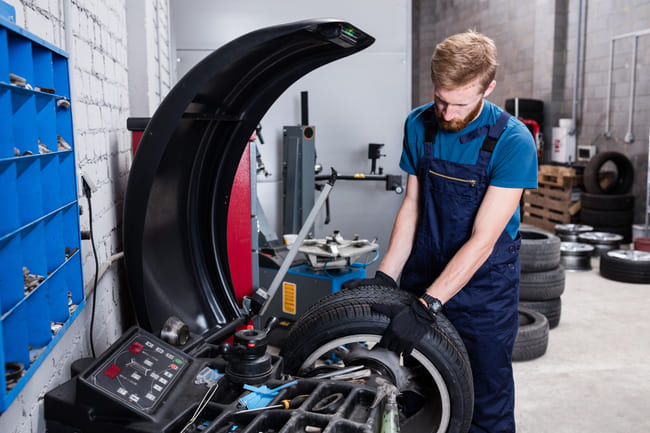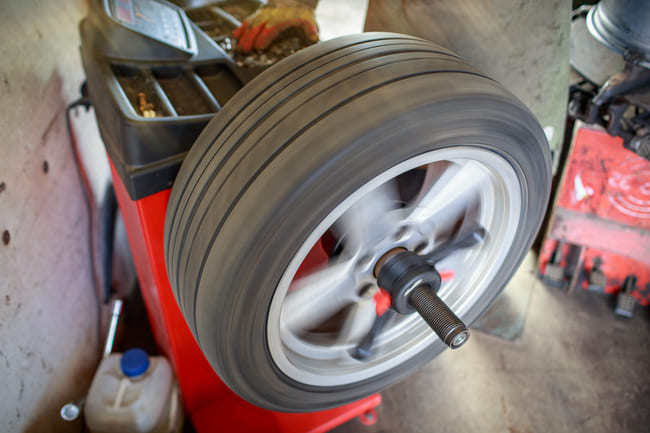
Balancing the wheels – how is it done and what does it cost?
A correctly balanced wheel is essential not only for safe driving but also for your comfort and that of your passengers. Only a properly balanced tyre can provide the best possible performance. Sometimes the distribution of the weight is not as ideal as it should be due to irregularly worn rubber, which can cause a so-called imbalance. This can promote faster wear of the tyres and if you wait too long it can damage other parts of the car as well. Therefore, it is essential to get the tyres checked at the first indication that they are out of balance.

What causes an imbalance to happen?
Tyres are the point of contact between the ground and your car. As soon as you put the vehicle in motion, the tyres start to rotate. If you press the accelerator pedal, the speed of rotation also increases. Even if there is only a slight imbalance this can become noticeable when the steering wheel begins to flutter at certain speeds or you hear unusual sounds or noises that weren’t there before. This can happen for several reasons, for example, the valve and without this counterweight, the wheel cannot rotate evenly about the axle. Another cause is an irregularly abraded tyre tread. Hard braking and taking sharp corners can cause uneven wear of the rubber. So even the slightest weight variation can significantly affect the rotation.
Wheel balancing: how is it done?
Technically, balancing does not involve only the tyre, but the entire wheel. Colloquially, however, it has become common to speak of "balancing the tyre". This imbalance is remedied by placing small weights on the wheel. Remember that tyre balancing is only possible in the workshop with proper equipment. To do this, the mechanic mounts the wheel to a specialised machine which replicates the action of the wheel on the vehicle and it calculates the amount of the wheel imbalance to the exact gram. The equipment then indicates the weight and place where the mechanic has to position the counterweight.

When should tyres be balanced?
There are good reasons not to wait too long to get the wheels balanced. The wheel suspension as well as the entire car steering components, the chassis, and all other rotating parts are unnecessarily stressed by the increased vibration and break down more quickly and the rims will also be affected. It is therefore advisable to have your complete wheels checked before each change. There aren’t any set intervals for getting your tyre balanced. Some people choose to get this done at the time of the winter car tyres or summer tyres change, and other vehicle owners have the wheels balanced only when they have new tyres fitted. You can check here to buy cheap car tyres online. Nevertheless, it can be a good idea to have the tyres balanced regularly because as the tyre has to move on the wheel, the positioning of the counterweights can change and become misaligned with time. A trip to the workshop is recommended when you first notice that something is amiss with the tyre balance. We recommend having additional suspension parts checked at the same time to make sure that there isn’t any other damage to your vehicle.
What does wheel balancing cost?
In case you have purchased tyres or even quality tyres from Michelin and you take your car to a workshop to have them put on, you will not be asked to pay extra for this as it is included in the tyre service. Even if you are there for your seasonal tyre change, balancing is usually included in the price. If the tyres are only to be balanced and not changed, most mechanics will only charge £5-£10 per wheel. Make sure to shop around and get a quote before you take your car to a workshop.
TOP products on the subject:








